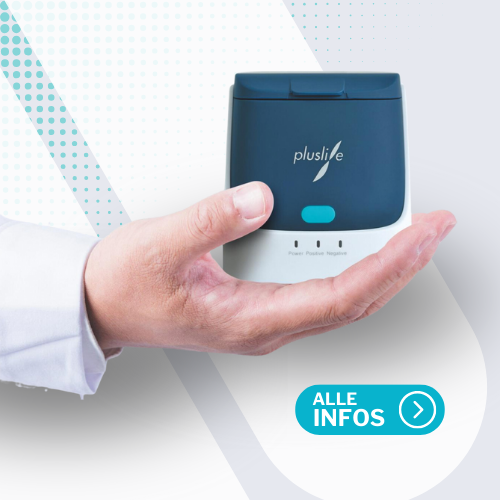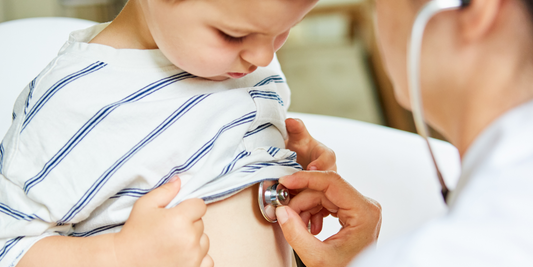
Autism - acceptance of human diversity
What is autism?
On the occasion of the international day of action, we want to raise awareness of autism. Maybe you have ever had any points of contact with it?
Autism or also called autism spectrum disorder is a complex neurological and development-related disorder that influences the behavior, communication and social interaction of a person. In ICD 10, autism spectrum disorders are one of the profound developmental disorders (ICD-10: F84). Until a few years ago, autism spectrum disorders were defined as illness or disability. In the meantime, "neurodiversity" or "neurodive -gang" people are more common. Autist: So inside do not see themselves as impaired, but only as different - and also want to be perceived and treated by society.
What about that „Autistic Pride Day "All about?
The Autistic Pride Day ", in German" Day of autistic pride ", is an international day of action that takes place every year on June 18. He was first launched by the "Aspies for Freedom" organization in 2005 to promote awareness and acceptance of autism in society.
Here are some essential aspects of the Autistic Pride Day:
- Celebration of autistic identity: The day should encourage the autism community to be proud of its identity. It is about not seeing autism as a deficit or illness, but as a natural variation of human neurodiversity.
- Increase in consciousness: It is sought to improve general awareness and understanding of autism. The day should help to reduce prejudices and misunderstandings.
- Promotion of acceptance: Autistic Pride Day emphasizes the importance of acceptance of autistic people in all areas of life. This includes support from education, work and in social life.
- Activities and events: Various events and activities worldwide take place, such as workshops, lectures, discussions and celebrations organized by and for autistic people.
- Symbol: The rainbow infinity symbol is often used to represent autism and neurodiversity. It symbolizes the infinity of human abilities and diversity within the autism community.
The Autistic Pride Day is an important day to celebrate and emphasize the rights and uniqueness of autistic people that they are a valuable part of society.

How many people are affected?
The occurrence of autism in Germany, as in many other countries, is measured based on the prevalence rate. The prevalence rate indicates how often a certain disease occurs in a certain population group.
Here are some important points on the occurrence of autism in Germany:
- Prevalence rate: Current estimates assume that about 1% of the population is affected by an autism spectrum disorder (ASA). This corresponds to around 800,000 people in Germany.
- Diagnosis: The diagnostic rates for autism have increased in recent years. This is partly due to improved diagnostic methods and greater awareness of autism in society and with experts.
- Gender distribution: Autism is more often diagnosed with boys and men than in girls and women. The ratio is approximately 4: 1. However, it is increasingly recognized that autism is often diagnosed in women, since their symptoms can be less obvious or are expressed in other ways.
- Diagnostic age: Autism can be diagnosed at any age, but often the diagnosis is made in childhood. Early detection and early interventions are important to ensure the best possible support and development for affected children.
- Support and resources: There are various support offers and resources for people with autism in Germany, including specialized schools, therapy centers and self -help groups. The inclusion and integration of autistic people into educational and professional life is increasingly promoted.
Which forms of autism are currently known?
Autism spectrum disorders (ASS) include a variety of conditions that differ in their kind and severity. The most common categories within the autism spectrum are:
Early childhood autism (caner syndrome):
- This is the most classic form of autism, which is usually recognizable before the age of third.
- Symptoms include significant difficulties in social interaction, communication and repetitive behavior patterns.
- Children with early childhood autism can also show sensory sensitivities and severely limited interests.
Asperger syndrome:
- People with Asperger syndrome often have normal to above-average intelligence and no significant delays in language development.
- However, they have difficulties with social interaction and often show limited and repetitive interests and behaviors.
- Asperger syndrome is often only diagnosed later in childhood or even in adulthood.
Atypical autism:
- This category includes people who meet some, but not all criteria for early childhood autism or Asperger syndrome.
- Symptoms can be milder or develop later.
- The term "PDD-NOS" is used to describe a wider group of developmental disorders that do not fall into the other specific categories.
Rett syndrome:
- This is a rare genetic disorder that affects almost exclusively girls.
- After an initially normal development, children with Rett syndrome between the ages of 6 and 18 months lose learned skills, especially in the field of hand motor skills and language.
- Rett syndrome is characterized by severe cognitive impairments and physical disabilities.
Childhood disorder disorder (Heller syndrome):
- This very rare disturbance usually occurs after a period of at least two years of normal development.
- Children with this disorder lose skills in several areas of development, including language, social skills and motor skills.
How is autism diagnosed?
The diagnosis of autism spectrum disorders (ASS) is a complex process that typically requires a comprehensive assessment by an interdisciplinary team of experts. This process includes several steps to make a precise and complete diagnosis. Here are the main steps of the diagnosis:
Early detection and screening
- Observation of the development: Parents, educators and pediatricians observe the early childhood development and pay attention to signs of developmental delays or unusual behavior.
- Screening tests: There are standardized screening tools that are used to test children for autism, for example the modified checklist for autism in Toddlers (M-Chat) or the social communication Questionnaire (SCQ).
Detailed medical history and development history
- anamnese: A detailed conversation with the parents or supervisors to grasp the child's development history, including milestones, behavior, social interactions and communication skills.
- Former medical and psychological reports: Review of previous reports and ratings to get a comprehensive picture.
- Observation of behavior: Clinical observation of the child in different situations to identify typical behaviors that could indicate autism.
- Standardized observation instruments: Use of instruments such as the autism diagnostic observation schedule (ados) for structured observation.
- Diagnostic interviews: Use of standardized interviews such as the Autism Diagnostic Interview-Revized (ADI-R) to collect detailed information on the symptoms and their course.
- Development and intelligence tests: Tests to evaluate cognitive skills, such as the Wechsler Intelligence Scale for Children (WISC) or the Stanford-Binet Intelligence Scales.
- Language and communication reviews: Tests for assessing language and communication skills, often carried out by speech therapists.
Multidisciplinary evaluation
- Cooperation between experts: A team of experts, including pediatricians, psychologists, neurologists, speech therapists and occupational therapists, works together to carry out a comprehensive assessment.
- Advice and consultation: The team discusses the results of the reviews and comes to a common diagnostic decision.
Exclusion of other disorders
- Differential diagnosis: It is important to exclude other developmental disorders, mental illnesses or medical conditions that could have similar symptoms, such as language disorders, anxiety disorders or sensory processing disorders.
Diagnosis and reporting
- Diagnostic dividing: After completing all ratings, the diagnosis is communicated to the parents or supervisors, together with a detailed explanation of the results.
- Individual recommendations: Based on the diagnosis, recommendations for interventions, therapies and support measures are given to promote the development and quality of life of the child concerned.
Continuous monitoring and adaptation
- Regular aftercare: Continuous monitoring of the development of the child and adaptation of the intervention strategies as required.
- Adaptation of the support: Flexibility in adapting the support in order to meet the child's changing needs.
The diagnosis of autism is a detailed and individual process that is based on careful observation and extensive evaluation to ensure that the specific needs of the child are recognized and addressed.

What symptoms have autistic people have?
The symptoms of autism spectrum disorders (ASS) vary greatly in type and severe degrees, but they can be divided into two main categories: impairments in social communication and interaction as well as restricted, repetitive behavior patterns and interests. Here are some common symptoms that occur in these categories:
Impairments in social communication and interaction
Social interaction:
- Difficulties to build and maintain social contacts.
- Problems with understanding and interpreting social signals such as facial expressions, gestures and tone.
- Little interest in joint activities or games with peers.
- Difficulties to put themselves into others or to understand their perspectives (lack of empathy).
Communication:
- Delayed language development or lack of language development.
- Difficulties in the course of the conversation, for example problems, starting a conversation or talking alternately.
- Repetition of words or phrases (echolaly).
- Unusual voice patterns, for example monotonous or singing way of speaking.
- Problems with understanding jokes, irony or metaphors.
Restricted, repetitive behavior patterns and interests
Repetitive behaviors:
- Repeated movements such as swings, hand flutter or turn.
- Staring holding on certain routines and rituals, difficulties with changes in the daily routine.
- Excessive preoccupation with certain objects or topics.
Special interests:
- Intensive interest in certain topics or activities, often unusual in type or intensity.
- Focus on parts of objects (for example, turning wheels).
Sensory sensitivities:
- Over- or subd sensitivity to sensory stimuli such as sounds, light, textures or smells.
- Unusual reactions to sensory experiences, for example aversion to certain clothing or preference for certain textures.
Other possible symptoms
- Cognitive abilities: Some people with autism have intellectual impairments, while others have normal or above -average intelligence.
- Emotional reactions: Difficulties in dealing with emotions, including strong reactions to frustration or stress.
- Motor skills: Problems with fine and gross motor skills, coordination difficulties.
The symptoms can be recognizable in early childhood, often before the age of third. The diagnosis and support should be adjusted individually, since every person has different strengths and needs with autism.

Treatment and support
There are various therapy and support options for people with autism spectrum disorders (ASS) that aim to promote their skills, improve their quality of life and to support them in coping with challenges. Here are some of the most important approaches:
Behavioral therapy
Applied behavioral analysis (aba):- A scientifically sound approach that aims to promote desired behaviors and reduce undesirable.
- Intensive, individualized meetings that often take place in a one-to-one situation.
- Application of positive reinforcements to develop skills such as communication, social interaction and self -help.
Positive Behavior Support (PBS):
- A comprehensive approach that integrates positive behavioral strategies to reduce problematic behaviors.
- Inclusion of the environment and the community to promote sustainable changes.
Language and communication therapy
Speech therapy:
- Promotion of language skills, including articulation, vocabulary and language intelligibility.
- Support in the development of non -verbal communication skills such as facial expressions, gestures and image communication systems.
Supported communication (UK):
- Use of aids such as picture boards, communication devices or apps to facilitate communication.
- Promotion of independence and improvement in social interaction.
Occupational therapy
Sensory integration therapy:- Treatment of sensory activities that aim to regulate the sensory system through targeted activities.
- Improvement of motor skills and body awareness (serve for this Massage devicesto set sensory stimuli)
- Support in the development of skills that are important for everyday life, such as attracting, eating and body care.
- Promotion of independence and independence.
Social competence training
Social stories:
- Improvement of social situations and behaviors through stories that promote understanding and coping with social interactions.
- Development of skills such as empathy, takeover and conflict resolution.
Group therapy:
- Training of social skills in small groups to practice dealing with peers and strengthen social skills.
- Role games and practical exercises to improve social interaction.
Educational support
Specialized educational programs:
- Adaptation of the curriculum and teaching methods to the individual needs of children with autism.
- Use of specialized teachers and therapists to offer targeted support.
Including education:
- Integration of children with autism into regular school classes with additional support.
- Promotion of social inclusion and mutual understanding.
Medical and psychological support
Medication:
- Use of medication to treat accompanying symptoms such as fear, depression or hyperactivity.
- Careful monitoring and adaptation of the medication by a specialist.
- Support in coping with emotional and psychological challenges through therapeutic conversations and interventions.
- Promotion of emotional well -being and self -regulation.
Support for families
Parent training and advice:
- Training and support for parents to learn effective strategies in dealing with the challenges of autism.
- Emotional support and exchange of experiences.
- Exchange and support between families and those affected to share experiences and support each other.
- Access to resources and information.
Professional support
Career orientation and advice:
- Support in professional orientation and the search for suitable training or workplaces.
- Adaptation of the work environment and promotion of professional skills.
- Accompanying and support in the workplace to enable successful integration and long -term employment.
- Provision of job coaches and individual support.





























